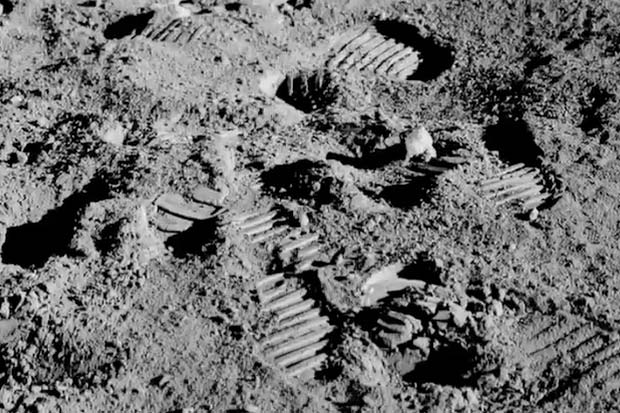Eugene Cernan's Legacy: Apollo 17 Commander's Footprints Still on the Moon

Eugene Cernan may be gone, but he left a lasting mark in the heavens.
The tracks Cernan — who died Monday (Jan. 16) at age 82 — and Apollo 17 crewmate Harrison Schmitt made on the moon's surface in December 1972 are still visible today, as these images captured by NASA's Lunar Reconnaissance Orbiter (LRO) spacecraft show.
The LRO photos reveal both the snaking footprints of Cernan and Schmitt and the tire tracks left in the lunar dirt by the Apollo 17 rover. LRO has also spotted hardware left behind by the mission, including the rover, the Apollo 17 descent stage (known as Challenger), the Apollo Lunar Surface Experiments Package and a transmitting antenna.
The car-size LRO probe has snapped similar photos of all six Apollo landing sites, which are spread across a broad swath of the lunar surface.
A total of 12 people set foot on the moon's surface during the six landed Apollo missions, from Apollo 11's Neil Armstrong and Buzz Aldrin in July 1969 to Schmitt and Cernan three and a half years later. (Cernan holds the distinction of being the last person on the moon.)

Most of these astronauts' footprints, and the Apollo hardware, will last a long time — many millions of years, most likely. Erosion by wind and water does not occur on the moon, which harbors no liquid surface water and has just a wispy "exosphere," as opposed to a thick atmosphere like that of Earth. And there are no active lunar volcanoes, so burial by lava is not a concern, either.
Particles from the sun hit the lunar surface, but they wear away surface features extremely slowly. So the only real threat to these space-history landmarks in the foreseeable future (aside from human meddling) is a direct hit by meteorites. Such impacts are far more common on the moon than on Earth, whose atmosphere burns up most incoming space rocks.
Get the Space.com Newsletter
Breaking space news, the latest updates on rocket launches, skywatching events and more!
The $504 million LRO mission launched in June 2009. The spacecraft first scouted the moon to help NASA plan for future lunar-exploration missions. Since September 2010, however, LRO has been operating in more of a pure-science mode.
Follow Mike Wall on Twitter @michaeldwall and Google+. Follow us @Spacedotcom, Facebook or Google+. Originally published on Space.com.
Join our Space Forums to keep talking space on the latest missions, night sky and more! And if you have a news tip, correction or comment, let us know at: community@space.com.

Michael Wall is a Senior Space Writer with Space.com and joined the team in 2010. He primarily covers exoplanets, spaceflight and military space, but has been known to dabble in the space art beat. His book about the search for alien life, "Out There," was published on Nov. 13, 2018. Before becoming a science writer, Michael worked as a herpetologist and wildlife biologist. He has a Ph.D. in evolutionary biology from the University of Sydney, Australia, a bachelor's degree from the University of Arizona, and a graduate certificate in science writing from the University of California, Santa Cruz. To find out what his latest project is, you can follow Michael on Twitter.









